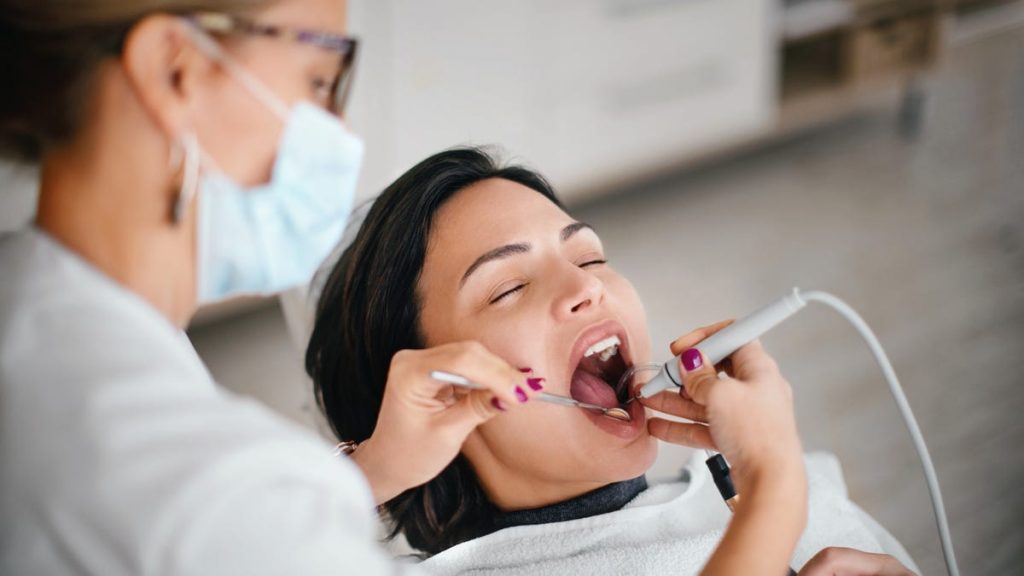Dental fillings aren’t a pleasant way to fix cavities but they’re necessary to fill holes and prevent further damage. But now a research team at the University of Nottingham in the UK is working on a gel that could help prevent tooth decay and regenerate damaged tooth enamel.
According to research published in the journal Nature Communications this month, the gel works by containing a modified version of amelogenin, a protein that helps guide the growth of enamel in infants. The gel fills holes and cracks in the teeth when applied.
«The gel was able to grow crystals epitaxially, which means it’s in the same crystallographic orientation as existing enamel,» Alvaro Mata, a professor in Biomedical Engineering and Biomaterials at the University of Nottingham, told New Scientist.
Don’t miss any of our unbiased tech content and lab-based reviews. Add CNET as a preferred Google source.
Enamel is the hard layer of the tooth that shields the softer inner layers from damage caused by general wear and tear, acid and bacteria. Tooth decay happens when the enamel layer breaks down. Enamel doesn’t regenerate naturally, and while fluoride treatment and remineralization toothpaste that uses nano-hydroxyapatite can offer a temporary fix, they aren’t a permanent solution, unlike getting a dental filling.
The new gel creates a thin yet durable layer that adheres to the teeth for several weeks, using calcium and phosphate to stimulate the growth of new crystals in the enamel. In a separate email interview with CNET Mata explained how long he expects the gel to last. «The gel is biodegradable and the process to remineralize takes approximately two weeks.It is applied once, and it will endure as native enamel would, depending on people’s health habits.»
Research shows it works on heavily damaged enamel
«Dental enamel has a unique structure, which gives enamel its remarkable properties that protect our teeth throughout life against physical, chemical and thermal insults,» said Dr. Abshar Hasan, a postdoctoral fellow and leading author of the study. «When our material is applied to demineralized or eroded enamel, or exposed dentine, the material promotes the growth of crystals in an integrated and organized manner, recovering the architecture of our natural, healthy enamel.»
This process was effective even when the enamel was severely worn and the dentine below was exposed, according to the research.
«If used as a preventive solution, it can avoid getting to the dental filling stage,» said Mata. «In a way, it needs to be managed as a chronic disease where patients need to start at home with more education and care. Having said this, we have been working on this for 16 years, which has allowed us to develop quite a bit of know-how to understand, control and shape the technology. Because of this, we now have a versatile technology that will derive into multiple types of products. I believe that in the future, dental fillings will be a possibility.»
Mata says he’s «very excited because the technology has been designed with the clinician and patient in mind. It is safe, can be easily and rapidly applied, and it is scalable.» He’s started a startup called Mintech-Bio and hopes to have the first product out next year, according to New Scientist, following the clinical trial.
Dentists are cautiously optimistic
CNET reached out to several dentists to get their perspective on the gel.
Bianca Velayo, general dentist in Henderson, Nevada, and multi-practice owner at PDS Health, was cautious about the timeline.
«Dental materials like this rarely hit the market overnight, even with exciting results,» she says. «After early lab success, the real test is how it performs in the human mouth under real-world conditions: heat, saliva, bacteria, diet and daily habits. Between lab research, multiple trial phases and regulatory approval, it usually takes 5 to 10 years before we’d see a material like this in everyday dental use.»
However, Velayo also says she’s excited about the prospect of these replacing traditional dental fillings in the future.
«This gel hints at the future of dentistry, where we could actually regrow what’s been lost. It’s the difference between repairing and truly healing the tooth,» she says.
Another dentist and multi-practice owner at PDS Health, Ahmad Mokbil, said that the treatment has potential but he doesn’t believe it’ll be possible anytime soon, as it requires a shift in educating patients, dentists, dental coverage and treatment protocols. However, he pointed to existing technology that’s in use.
«We use an FDA-approved treatment called Curodont, which has similar characteristics and is effective for treating early tooth decay,» Mokbil says. «The number of applications required can vary depending on how the tooth responds, the size of the cavity and how early the intervention takes place.»
